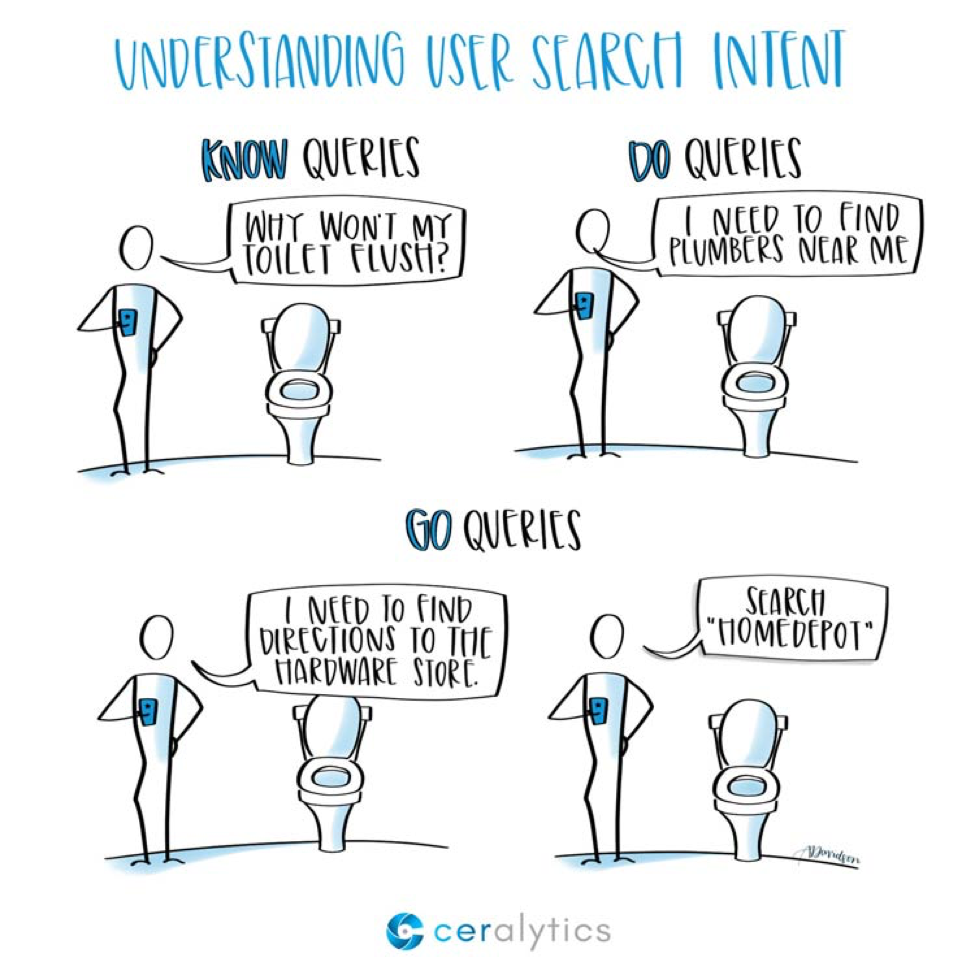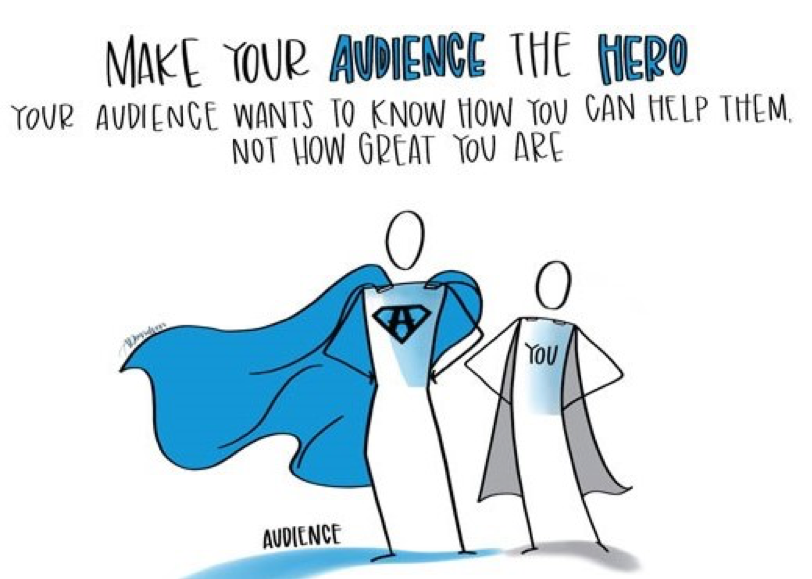Guest Post by Brandon Andersen
 90% of content campaigns fail to meet business objectives. What’s more, only 5% of content produces 90% of audience engagement.
90% of content campaigns fail to meet business objectives. What’s more, only 5% of content produces 90% of audience engagement.
So when you’re launching your content campaign, the odds are already stacked against you. How do you overcome these odds to make your campaign succeed? Well, to start, look at what you’re probably doing right now that you need to fix.
Here are 8 reasons why many content campaigns fail, and what you can do to avoid them.
1. You wrote about a topic your audience doesn’t care about
It’s easy to assume you know what your audience wants. But choosing the correct topic to write about is actually one of the hardest parts of content marketing. Even the best written piece of content will fail if the subject matter isn’t important to your audience.
Topic ideas can come from anywhere.
Some come from sales teams, others from SEO professionals and a good handful come from executives who hear about a new trend and want their company to cover it.
All of these can be great sources, but they must also be vetted with actual data – both qualitative and quantitative, before getting the green light for a content campaign of any scale or significance.
How to avoid choosing the wrong topic
The topic for your content campaign should be based on the pain points your audience has, the products/services you offer and where those two areas overlap. Getting to this information can be much more difficult than one would assume.
Getting qualitative data
Qualitative data is based on getting people’s opinions to questions you ask them.
You can get qualitative feedback from prospects and clients via focus groups, surveys, one-on-one interviews or any other method where you are presenting the audience with questions to which they can reply.
When getting qualitative feedback, try to dig into pain points. If a respondent says that they want to know more about how blockchain works, dig into why they want to know that. Do they want to use blockchain for their business? Do they want to invest in companies doing blockchain?
Figure out the underlying cause of their pain point and you can get some truly great, unique content ideas.
Getting quantitative data
Quantitative data is based on statistics and metrics. In content marketing, these statistics can be in the form of website analytics, the actual behavior of website visitors, CRM analytics, etc.
The leading quantitative method to discover audience pain points is content intelligence. Content intelligence uses data from your site and your competitor’s sites to identify the topics which matter most to your audience.
Quantitative data is more direct, telling you with hard data that one topic is performing better than another for a variety of metrics, such as inbound traffic, engagement, conversions and more. When combined with qualitative data, key pain points and existing content gaps can be easily found.
You can then be confident in the topics you’re creating content campaigns around because they are proven to work in your industry and for your audience.
2. Not understanding the user’s search intent
Your content campaign will most-likely have an SEO component, enabling it to live on well past the initial promotional stage of the campaign.
A common error content creators make when developing new content is not understanding a user’s intent when they are searching for a specific topic.
Here’s a breakdown of the types of user intent:

If your content doesn’t align with a user’s search intent, they will immediately bounce from your site and go to a result which aligns with their actual need and intent.
For example, people searching for the term “how to create a content strategy” have the intent to learn how to create a content strategy. If your content to meet that need is focused instead on them hiring you to do the content strategy for them, they will most likely bounce. Their query was a “Know” query, but your content was focused on “Doing.”
How to align search intent
Once you’ve identified a topic and the keywords on which to focus, put yourself in your audience’s shoes. Are they looking to know something (how something works or how to create something themselves), do something (getting help, searching for someone to help them achieve a goal), or go somewhere (like a location or a website)?
A simple way to do this is to search the keyword in Google and see what types of posts come up. Google is always working to identify user’s intent, and if your keyword comes back with posts which are centered around “Know” queries, then your content should probably be focused on education instead of pushing a product or solution.
3. You made the content about you
Here’s a brutal truth in marketing:
No one wants to read about you.
Sorry. It’s true.
People want to read about things that help themselves. If you’re focused on what you do, and not on how you help your clients and prospects, you’re going to fail.
How to make content about the audience

Everything you write should focus on you being the sidekick that helps your audience be the hero. YOU don’t do anything. YOU help THEM do everything. Your role in content is to be the helper, not the hero.
For example:
You as the hero: “The 20v battery will last 8 hours on a single charge.”
Customer as the hero: “Work the whole day without the hassle of changing or charging batteries.”
This change paints the picture of someone who doesn’t have to lose time to change or charge a battery. That wasted time is a pain point which is addressed directly without the content being about the drill.
4. You didn’t know how to measure success
If you’re at the end of your campaign and you’re scrambling to pull together data to prove the success of your campaign to your c-suite, you’ve already lost.
Without knowing what success looks like before the campaign begins, how are you supposed to create a successful campaign? This is a huge mistake that nearly every organization makes.
How to avoid looking like a chump
Before you begin a campaign, address what your business objectives are for it. What are you looking to get out of the campaign?
Once you’ve identified the business objective, identify the metrics you will use to prove success. Are you looking to increase revenue? Then understand how to measure revenue that comes in from the campaign first. Are you looking to increase newsletter subscribers? Figure out how you will measure them.
After you have the objectives and metrics, identify the exact goal and timeline for the campaign. “Increase web traffic” is not a good goal. “Increase web traffic 30% in the next 90 days” is a great goal which can be measured and measured against.
5. You forgot to promote the campaign
It’s called content marketing for a reason. You need to market that content! Simply writing a post and hoping it will take off on its own just doesn’t work anymore.
There is so much competition out there, that only the organizations with sound content and promotion strategies are going to succeed.
Yet, for many of us, we think that if we just pump out enough content into the ether that somehow everything will work out. Unfortunately, that’s rarely, if ever, the case.
How to avoid stalling a campaign
You need to understand your distribution strategy and align that to the goal of the campaign. If the goal of the campaign is to build brand awareness, you’re probably looking to distribute it beyond your existing contacts. So just doing an email push probably isn’t the right approach. Instead, you’re more likely to have success with larger ad buys – either on traditional or social channels.
Likewise, if your goal is client retention, doing a large ad buy is probably not the right approach. Instead, you want to focus on emailing (or even direct mailing) your clients.
Whatever your goal, just make sure you have a way of getting the content out there. Utilizing the PESO model, you can effectively promote a piece of content through the right channels, to the right people, at the right time.
Your content is not likely to go viral, so you need to put in the legwork to get it noticed.
6. You didn’t optimize for SEO
Your content got published, you promoted it like crazy and after the promotion died down, your traffic to that content flatlined. What happened?!
Well, there’s a good chance that you didn’t optimize your content for search and it is now sitting on page 12 of search results for the keywords you wanted to rank for. Oof.
How to avoid poor SEO
If you’re new to content marketing and SEO, go check out Moz’s guide to SEO. These fundamentals should be taught to every content marketer.
Any content you create that lives online should be optimized for SEO. There are some great ways to surround a central piece of content (cornerstone content) with other pieces of content (brick content) to help it rank better. Ceralytics’ guide to content marketing campaigns lays out this concept in chapter 5.
When done well, each campaign you create will build on top of the success of previous campaigns. As they all grow in search volume over time, your inbound traffic will continue to increase month over month.
On top of that, as pieces of content get more traffic and inbound links from other sites, they actually help every other piece of content on your site get better search rankings as well.
7. Your headline sucks
You can have everything in your content right. You address the pain points of your audience, you know their intent, you deliver amazing value to them and you promote the heck out of it. But if you don’t have a great, eye-catching headline, your campaign won’t get clicks. And if it doesn’t get clicks, it doesn’t get an audience.
A great headline is essential to a successful content campaign.
How to avoid sucky headlines
First, make sure your main keyword is in your headline. Without that, you’re probably not getting found in search.
Second, give people a reason to click on your article. What’s the payoff to them? Can they tell from your headline what they’re going to get and how it will help them?
Let’s look at this article. The headline hopefully grabbed your attention. It would be one thing to just list out the reasons why the content failed, but we also included “(And How to Fix Them).” Hopefully this helped pique your own interest and get you to click.
A great tool for analyzing headlines is CoSchedule’s Headline Analyzer Tool. It will grade the effectiveness of your headline and give you tips on how to make it better.
8. You didn’t get executive buy-in
A lack of resources often hangs up great pieces of content from getting created or promoted correctly.
Content marketing isn’t something that can survive off of the leftover budgets of other departments. It takes dedicated resources, a sound content strategy, and buy-in from the c-suite to make it all happen.
How to get executive buy-in
Executives are mainly focused on achieving business objectives. If your content campaign relies on soft metrics that don’t tie back to business objectives, you’re going to have a hard time getting their blessing.
Make the case for content marketing to your executives by pointing out the business need for it.
Here are some things to consider when making your case
Unlike other forms of marketing, content marketing builds on itself. Once the promotional budget is gone for a campaign, that content can continue to deliver results in the future thanks to SEO.
Don’t focus on the creative details of the campaign. Instead, keep your pitch focused on the pain point you’re solving for your audience and the business outcome you expect. If you need extra resources, executives are more likely to give you those resources if you can show them the expected result and a clear path to attain it.
Have a documented content strategy and show how you will measure against it. A content strategy that is collectively in the minds of the marketing team, but not on paper, is a red flag to any executive. Write that strategy down.
Are there any other places where you see content campaigns failing? Let us know in the comments below!

Brandon Andersen is Chief Strategist at Ceralytics, a content intelligence platform. A self-described content marketing junkie, Brandon is always looking for new ideas and brilliant uses of content that tells a story.









[…] campaigns built over weeks on best guesses and gut instinct to data-driven, real-time, iterative storytelling with metrics that tie back to provide revenue indicators and accelerate customer funnel activities that impact the bottom […]